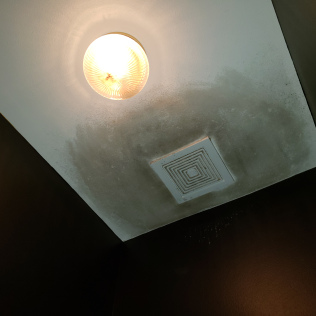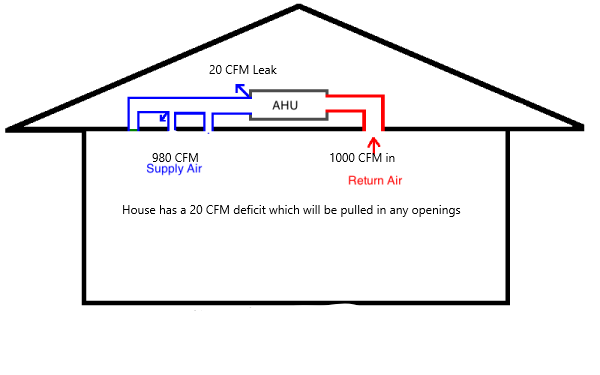
As I write this on the 16th of October just after noon, the relative humidity outside is 90% with a temperature of 84 degrees F. In the AC business this is known as ‘just right’.
In the past 10 weeks I have visited two or three homes each week to inspect several negative effects of humidity including:
The reason this involves an air conditioning contractor is that air conditioning is the cause. Or rather, many homes are not constructed properly to exist in this area with air conditioning.
To grasp the problem of the ceiling stains and the warping floor it helps to understand the term dew point. You have seen a glass of cold water sweat on the outside. Dew point is the temperature at which this occurs.
When the French built the first settlement at Mobile in 1700, dwellings may be wooden pikes driven into the ground with mud daub. None of the dwellings constructed of wood lasted more than a few years; everything rotted. This has always been a humid climate so they started building up off the ground on stone or cement piers. Other than the problem of termites this was a durable method of construction.

Before air conditioning, homes built like these could last for centuries.
Enter Willis Carrier. While the inside of the home is drier, air conditioned homes can chill parts of the building components below the dew point of the ambient air and condense water – the same water that drips on the outside of the glass and puts those rings on your grandmother’s coffee table.
The main purpose of this article is to introduce some concepts that will be developed in future posts:

The picture above is actually not caused by air conditioning but occurs during the heating season. It is the same process but in reverse. I show it here because it illustrates what happens inside a wall. The mechanism is as follows: This poorly insulated window casing gets cold in the winter chilling the drywall below the dew point of the inside air. A curtain or other internal window covering can trap air against the window cooling the air below the dew point.




Bath fans, electrical openings and attic stairs are openings to the outside air. If the air pressure inside is lower than outside, wet air will be drawn into any openings.

Since the house pressure is now lower, air will be drawn in to all openings in the building envelope. When this wet, high dew point air contacts cool building surfaces condensation of water vapor into water occurs. This chronic condition is the cause of mildew and mold.
This process also occurs in areas that aren’t visible. One place with a symptom that is visible is warped wood flooring. When wet air is pulled into a wood sub-floor high humidity without condensation can be enough to cause ‘cupping’ of flooring.


Pressurizing the home is one method used to use the air conditioner to correct a negatively pressurized home.
If you’re unsure about anything regarding the negative effects of humidity on your home, feel free to contact us! We will be able to help, as well as identify any problems before they get out of hand.
Give us a call at 251-990-0998 or click the button below to schedule an appointment.
Easily book your service here.